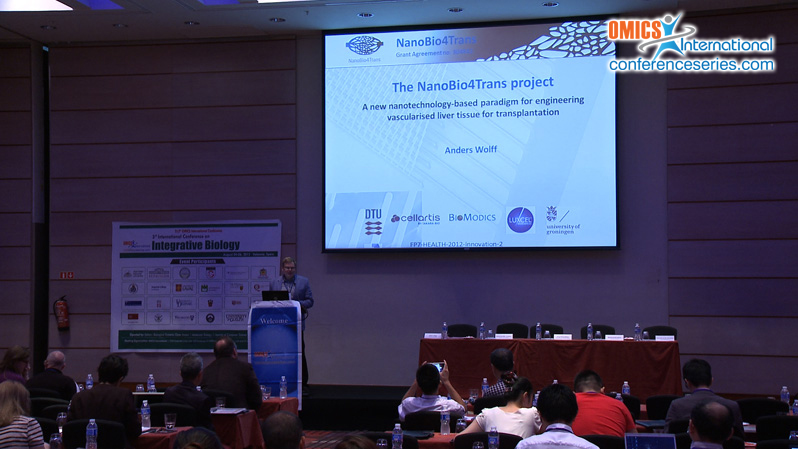
Anders Wolff
Technical University of Denmark, Denmark
Title: Lab-on-a-chip system with integrated sensors for 3D tissue engineering applications
Biography
Biography: Anders Wolff
Abstract
Organ transplantation is often the primary life-saving medical approach for treatment of several diseases. However, limitations in this procedure such as shortage of donor organs and tissue rejection have motivated research into the development of bio-artificial organs as an alternative approach. Development of a novel, modular, microfluidic lab-on-a-chip system is presented, which is designed to engineer liver tissue in an in vivo mimicking environment. The system incorporates smart bioreactors, designed to support a 3D porous scaffold with embedded cells and integrated sensors for monitoring the development of the tissue. Each bioreactor is designed to accommodate a microporous scaffold having dimensions of 5 x 5 x 5 mm3 and includes spatially distributed bio-impedance based sensors which penetrate the scaffold for real time monitoring of the distribution, proliferation and viability of cells under continuous perfusion conditions. To enable delivery of nutrients and removal of tissue culture waste products, the system also incorporates peristaltic pumps, motors and reservoirs. An array of eight bioreactors are included, to enable parallel tissue culture experiments for optimization of parameters such as flow rate, and to allow screening of various stem cell differentiation factors. The system components are fabricated using a combination of 3D rapid prototyping and microfabrication techniques. Proof of principle is demonstrated by culturing liver cancer cell line (HepG2 cells) in porous scaffolds based on polymers such as PDMS, gelatin, and polylactic acid.
The robust and versatile microfluidic platform presented in this work has a huge potential for 3D tissue engineering applications. The novelty of the device is in the employment of combined micro sensing and polymer scaffold engineering approaches for 3D organ engineering. The use of integrated non-invasive sensing strategies, overcome limitations in traditionally adopted optical techniques, and enable monitoring of tissue development within otherwise inaccessible areas of a 3D tissue construct.





